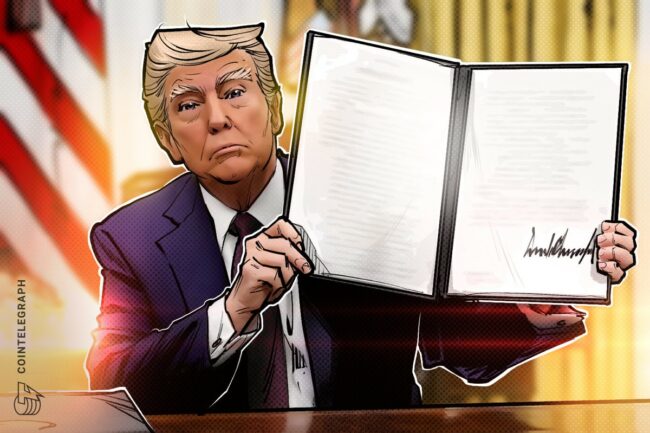On Wednesday, speaking from the White House, US President Donald Trump suggested that families scale back on gifts this year.
Asked about his tariff program, the president remarked, “Somebody said, ‘Oh, the shelves are gonna be open. Well, maybe the children will have two dolls instead of 30 dolls, and maybe the two dolls will cost a couple of bucks more.’”
But the toy stores where those dolls are sold might have something to say about it.
Earlier in the week, Mischief Toy Store in St. Paul, Minnesota joined a growing number of American small businesses suing the president over his emergency tariff plan.
Throughout April, a groundswell of lawsuits led by 13 states further challenged Trump’s ambitious tariff program. Their success or failure rests on hundreds of years of judicial policy and American constitutional law.
The legal basis for the Trump tariffs
When Trump first announced his ambitious tariff program to the world, you might have wondered, Why is he allowed to do this? Well, he may not be. The president’s power to unilaterally impose tariffs is not rooted in the office’s constitutional Article II power. Instead, it is a delegation of authority by Congress.
Article I of the US Constitution creates Congress, and Section 8 delegates the authority to “lay and collect taxes, duties, imposts and excises.” For much of the United States’ history, this is precisely what it did — through a series of colorfully named tariff programs like the Tariff of Abominations of 1828, the Dingley Tariff of 1897 and culminating in the infamous Smoot-Hawley Tariff of 1930.
At the time, Smoot-Hawley was widely perceived as contributing to the devastation of the Great Depression. As a consequence, Congress’s use of tariffs became viewed as corrosively political and dysregulated, spurring change.
In the early 1930s, then-President Franklin Delano Roosevelt pushed for legislation to grant his office the authority to negotiate tariffs. He argued that tariffs had wrecked the economy and that he should have the power to reduce them:
World trade has declined with startling rapidity. Measured in terms of the volume of goods in 1933, it has been reduced to approximately 70 percent of its 1929 volume; measured in terms of dollars, it has fallen to 35 percent. The drop in the foreign trade of the United States has been even sharper. Our exports in 1933 were but 52 percent of the 1929 volume, and 32 percent of the 1929 value […] a full and permanent domestic recovery depends in part upon a revived and strengthened international trade and that American exports cannot be permanently increased without a corresponding increase in imports.
Thus followed the Reciprocal Trade Agreement Act of 1934 (RTAA), which gave the president the power to set tariff rates, provided it came as part of a reciprocal agreement with a counterpart. This allowed the office to negotiate directly with other nations and promoted a period of liberalized trade.
The RTAA, however, is not the law that Trump is now relying on. His tariffs are unilateral, not reciprocal, and would require another century of law to conceive.
After the RTAA, Congress continued to delegate authority to the president through the midcentury. Notably, this included the Trade Expansion Act of 1962, which allowed the president to impose unilateral tariffs in response to national security threats; the Trade Act of 1974, which allowed the president to retaliate against unfair trade practices; and, crucially, the International Emergency Economic Powers Act of 1977, known as IEEPA.
Now, the IEEPA doesn’t say anything about tariffs; it is better known as the law that recent presidents have used to levy sanctions against enemy nations like Russia. It grants the president the power to respond to declared emergencies in response to “unusual and extraordinary threat[s]” (the president also has the power to declare emergencies, but that comes from the National Emergencies Act, a different law) by “investigat[ing], regulat[ing], or prohibit[ing] any transactions in foreign exchange.”
Related: Trump’s WLFI crypto investments aren’t paying off
Despite this novel application, the Trump administration has seized on the law because, unlike all other tariff statutes, it permits the president to act through executive order alone.
Throughout his young second term, Trump has used this statute to declare arbitrary tariffs on virtually all of America’s trading partners. First, declaring 25% tariffs on Canada and Mexico and then various large tariffs on the rest of the world.
To do so, Trump declared a “national emergency posed by the large and persistent trade deficit that is driven by the absence of reciprocity in our trade relationships and other harmful policies like currency manipulation and exorbitant value-added taxes (VAT) perpetuated by other countries.”
This was the first time a president had attempted to…
cointelegraph.com
